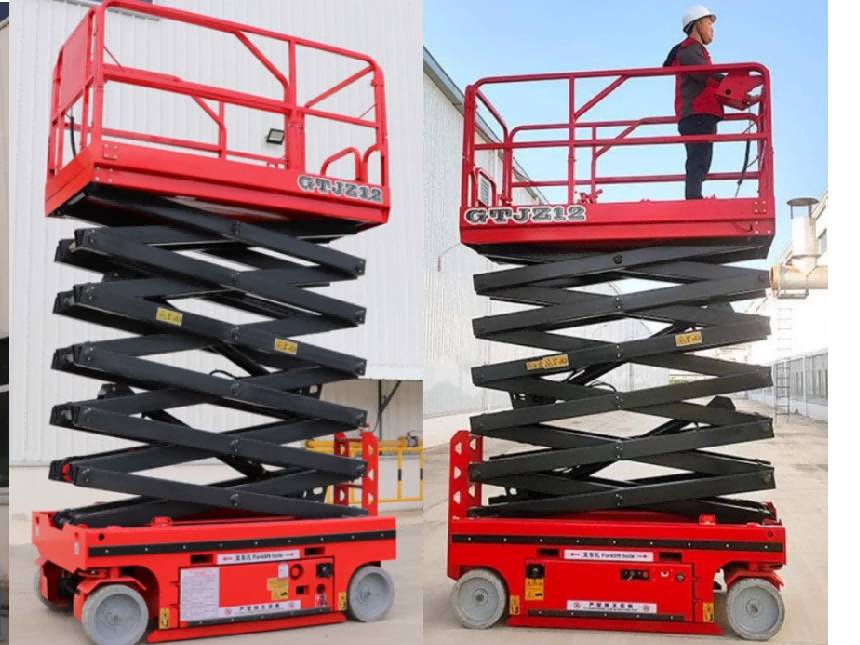In the crane and heavy machinery sector, mobile elevating work platforms(MEWPs) are far more than just "lifting tools"—they’re precision instruments that bridge the gap between ground-level operations and high-reach tasks, complementing cranes in scenarios where heavy lifting meets the need for worker access. From construction sites to industrial facilities, their versatility makes them indispensable. Yet, like any equipment, their performance hinges on proper use and upkeep. Let’s explore their key applications and maintenance essentials.

How MEWPs Integrate into Crane Industry Operations
- Crane Assembly and Maintenance
Assembling large tower cranes or mobile cranes requires workers to access high components (e.g., boom joints, hydraulic hoses, or control panels). Boom lifts with articulating arms navigate around crane structures, letting technicians tighten bolts, inspect welds, or replace worn parts without risking falls from ladders.
For routine crane inspections—like checking overhead crane rails in factories or gantry crane wheels—scissor lifts provide stable platforms for workers to measure wear, clean tracks, or repair electrical connections (such as sliding contact lines).
- Construction Site Coordination
While cranes hoist steel beams or concrete panels, MEWPs support workers installing fixtures, wiring, or cladding at height. For example, after a crane places a precast wall section, a scissor lift elevates a crew to seal joints or attach insulation.
In high-rise construction, telescopic boom lifts reach upper floors to align crane hook blocks, adjust rigging, or guide loads into place—tasks that demand precision and worker proximity to the crane’s operating zone.
- Industrial Facility Maintenance
In warehouses with overhead cranes, MEWPs service the crane’s control systems, trolley mechanisms, or lighting. A narrow-aisle scissor lift can maneuver between storage racks to reach crane rails, while a boom lift accesses hard-to-reach areas like ceiling-mounted crane motors.
At ports, where ship-to-shore cranes operate, MEWPs with rough-terrain capabilities handle inspections of crane towers, cable pulleys, and safety barriers—even in wet, windy conditions.
- Emergency and Repair Scenarios
If a crane breaks down mid-operation (e.g., a stuck trolley or a faulty hydraulic line), MEWPs quickly elevate repair teams to the problem spot. Unlike cranes, which may be immobilized, MEWPs can navigate around the disabled equipment, reducing downtime.
After natural events like storms, MEWPs assist in assessing crane damage—checking for bent boom sections or damaged electrical systems—before heavy lifting resumes.
- Logistics and Yard Management
In crane yards, where mobile cranes are stored or serviced, scissor lifts help workers load/unload small parts (e.g., hydraulic filters, safety harnesses) onto crane cabs or prepare rigging gear stored on high shelves.
For container yards with gantry cranes, MEWPs enable workers to access control cabins, clean surveillance cameras, or repair lighting systems along the crane’s rail path.
Maintenance: Keeping MEWPs Reliable in Heavy-Duty Environments
- Pre-Use Checks: Daily Non-Negotiables
Structural Integrity: Inspect the platform floor for cracks, guardrails for stability, and gate latches to ensure they lock securely. Loose railings are a critical hazard when working near moving cranes.
Mechanical Systems: Check hydraulic hoses for leaks (a common issue near crane yards with oil residue) and test lift/lower functions at low heights to ensure smooth operation. For diesel-powered MEWPs, listen for unusual engine noises—signs of wear from dusty job sites.
Safety Features: Test emergency stop buttons, overload alarms, and backup descent systems (e.g., manual pumps for hydraulic failure). In crane zones, where MEWPs may operate near moving loads, these features can prevent collisions or falls.
- Weekly Deep Dives
Lubrication: MEWP joints (e.g., boom pivots, scissor arms) take a beating from vibration near cranes. Apply manufacturer-recommended grease to reduce friction—pay extra attention to parts exposed to dirt, which can grind against metal and cause wear.
Electrical Systems: For battery-powered MEWPs (common in indoor crane facilities), check connections for corrosion (a risk in humid or industrial environments) and ensure chargers function properly. Faulty wiring can lead to sudden shutdowns at height.
Tires and Mobility: Inspect tires for cuts or punctures from metal scraps (common in crane yards) and check pressure. For tracked MEWPs used on rough terrain near mobile cranes, tighten loose track links to avoid derailment.
- Monthly and Annual Maintenance
Hydraulic Fluid Analysis: Contaminated hydraulic fluid (from dust or water) can damage pumps—a costly repair. Test fluid samples monthly, especially after working in muddy or rainy conditions near outdoor cranes.
Structural Inspections: Hire certified technicians to check welds on boom sections and scissor frames. Crane yards often have metal debris that can chip paint, exposing metal to rust—touch up coatings to prevent corrosion.
Compliance Checks: Align maintenance with industry standards (e.g., ANSI A92 or ISO 16368) to ensure MEWPs meet safety requirements for working alongside cranes. This includes load capacity verifications—overloading MEWPs near cranes risks tipping, endangering both workers and nearby equipment.
- Storage and Long-Term Care
When not in use, park MEWPs away from crane traffic to avoid collisions. Cover them to protect from rain, snow, or crane-related debris (e.g., metal shavings from welding).
For battery-powered models, store with a 50-70% charge to prevent degradation, especially during long idle periods between crane maintenance projects.


